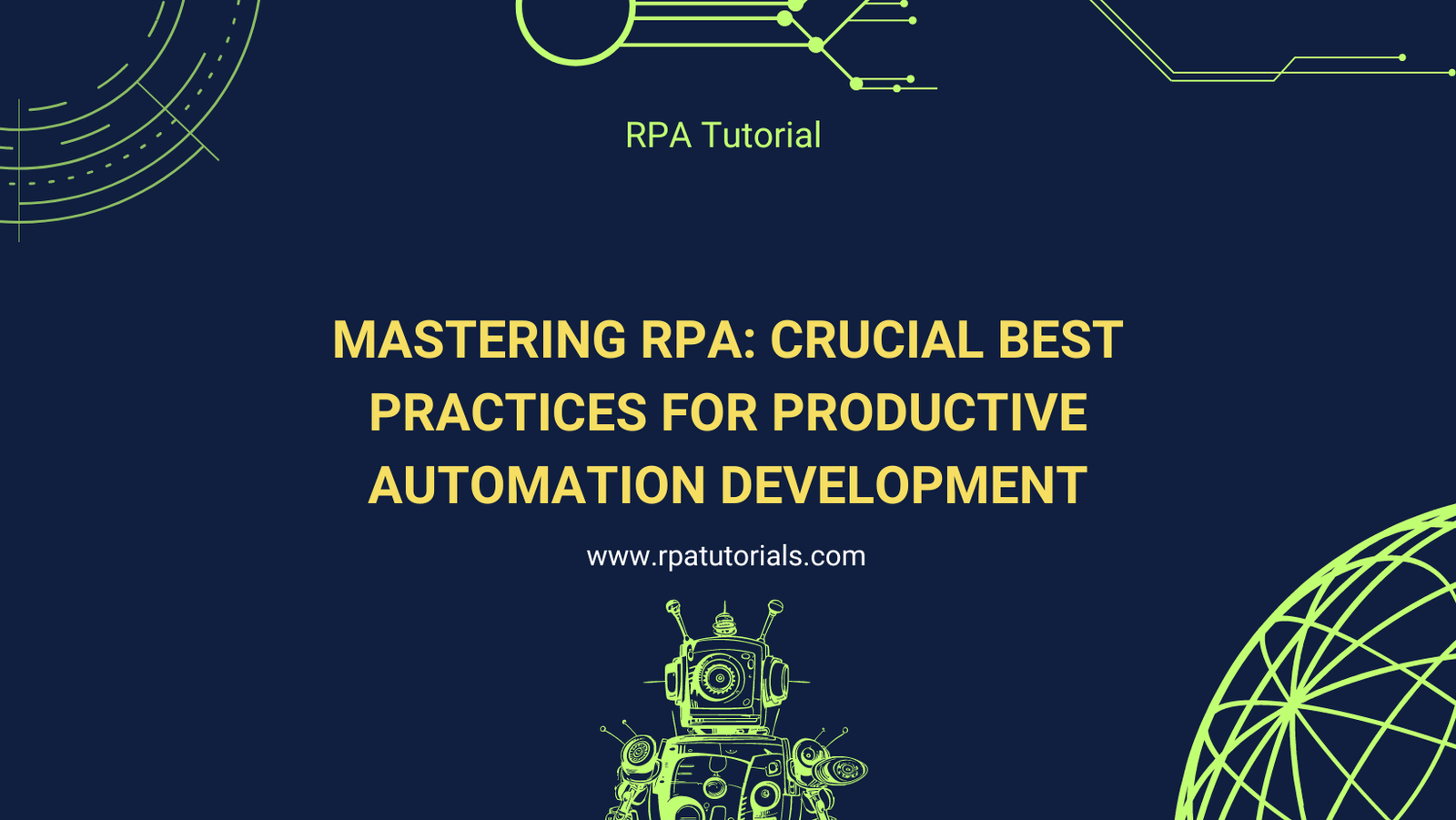Overview
Robotic Process Automation (RPA) holds tremendous potential for boosting productivity and streamlining business processes. However, to truly unlock these benefits, it’s essential to adhere to best practices during both development and deployment. In this guide, I’ll provide key insights to help you create RPA solutions that are reliable, efficient, and easy to maintain.
Table of Contents
- Understanding the Process
- Designing Robust Workflows
- Implementing Error Handling and Logging
- Optimizing Performance
- Ensuring Security and Compliance
- Testing and Maintenance
1. Understanding the Process
Conduct Thorough Process Analysis:
Before automating, ensure you have a complete understanding of the process. Identify key steps, exceptions, and possible challenges that could arise.
Engage Stakeholders:
Collaborate with stakeholders and process owners to gather valuable insights. This helps ensure the automation aligns with business objectives and meets operational needs.
Document the Process:
Develop detailed documentation, including flowcharts and step-by-step instructions, to guide you through the development lifecycle.
2. Designing Robust Workflows
Modular Design:
Break down your automation into smaller, reusable components to make the workflow easier to manage and maintain.
Use Descriptive Names:
Clearly label activities, variables, and arguments to enhance readability and ensure that the workflow is easily understandable by others (or by you at a later date).
Implement Proper Sequence and Flow Control:
Utilize sequences, flowcharts, and state machines appropriately to ensure a smooth, logical flow in your automation.
3. Implementing Error Handling and Logging
Robust Error Handling:
Implement try-catch blocks to handle exceptions gracefully. Incorporate retry mechanisms for transient issues to ensure the reliability of your automation.
Comprehensive Logging:
Use logging activities to capture key data during workflow execution. This will help with debugging and maintaining a clear audit trail.
Alert Mechanisms:
Set up alerts to notify relevant stakeholders in case of critical errors or failures, preventing minor issues from escalating into major problems.
4. Optimizing Performance
Efficient Data Handling:
Reduce unnecessary data processing within loops and optimize your use of data structures to ensure smooth performance and minimize delays.
Parallel Processing:
Where possible, implement parallel processing to handle multiple tasks simultaneously, significantly improving the overall efficiency of your workflow.
Resource Management:
Monitor and optimize resource usage to prevent memory leaks and other resource-related issues, ensuring your automation runs smoothly.
5. Ensuring Security and Compliance
Secure Credential Management:
Use tools like UiPath Orchestrator assets or Windows Credential Manager to securely store and manage credentials, safeguarding sensitive data.
Data Privacy:
Ensure compliance with data privacy regulations by handling personal information appropriately and anonymizing sensitive data where necessary.
Access Control:
Implement role-based access controls to restrict access to critical areas of your automation environment and protect sensitive information.
6. Testing and Maintenance
Comprehensive Testing:
Carry out thorough testing at every stage, including unit tests, integration tests, and user acceptance tests, to ensure that the automation functions as intended.
Regular Maintenance:
Schedule regular maintenance to update automation scripts, manage dependencies, and adapt to any changes in the underlying processes.
Continuous Improvement:
Collect feedback from users and actively monitor performance to identify areas for further optimization and improvement.
Conclusion
By following these best practices, you can develop RPA solutions that are efficient, reliable, and easy to maintain. Focus on understanding the process, designing robust workflows, implementing error handling, optimizing performance, ensuring security, and maintaining thorough testing to fully realize the benefits of RPA in your organization.
Stick to these guidelines to ensure your automation projects are successful and drive meaningful improvements in productivity and efficiency.
Happy automating!
